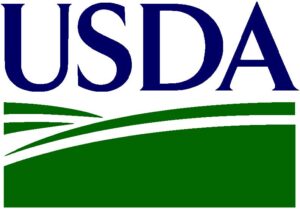While it  may not be the height of the season, I’ve got farm visits on my mind. Were any of you at the Farm-Based Education Conference at Shelburne Farms on Friday? As described in the brochure, this was a gathering of “nearly 200 farmers, teachers, non-formal educators, philanthropists, chefs, historians, land conservationists, journalists, health care specialists, food system and farm advocates, and other farm-based education practitioners, partners, and community leaders.” All these individuals came together to swap and build experience, resources, and inspiration.
may not be the height of the season, I’ve got farm visits on my mind. Were any of you at the Farm-Based Education Conference at Shelburne Farms on Friday? As described in the brochure, this was a gathering of “nearly 200 farmers, teachers, non-formal educators, philanthropists, chefs, historians, land conservationists, journalists, health care specialists, food system and farm advocates, and other farm-based education practitioners, partners, and community leaders.” All these individuals came together to swap and build experience, resources, and inspiration.
My workshop on youth safety for diversified farms included folks from Canada, Michigan, Maryland, Ohio, and Vermont. Many of the participants were looking for safety systems and strategies for one-time visitors and/or visitors that had open access to their land. How to keep the ad ults out of the donkey yard? The kids out of the poison ivy? What are the questions of liability? We discussed pre-visit communications, the use of paths and self-guided tours, signs, and waivers – and how to maintain the feeling of an open visit while establishing safe boundaries and direction for all farm visitors and residents.
ults out of the donkey yard? The kids out of the poison ivy? What are the questions of liability? We discussed pre-visit communications, the use of paths and self-guided tours, signs, and waivers – and how to maintain the feeling of an open visit while establishing safe boundaries and direction for all farm visitors and residents.
Three days after the conference, I had the chance to visit Farms for City Kids at Spring Brook Farm in Reading, Vermont. Two dozen 5th graders arrived from Boston that afternoon. First things first, everyone gathered on the dorm safety spot -the designated meeting place for emergencies. Once gathered, no one leaves without permission. They were introduced to the farm safety spot after lunch. During their first three hours on the farm (they were staying for the week), the kids settled into their rooms, met staff, ate a hearty lunch, and were introduced to work clothes, shoes, and mud-room protocol. Most had never been to a farm. They fed the heifers, visited the garden, the calves, and the dairy barn. Safety messages, boundaries, and rules were integrated and made clear through direct  experience and immediate context (“This is a piece of farm equipment. You’ll be using tools, but not farm equipment…”) During their 5-day stay, these visiting “farmers” will continue to participate in animal care, milking, cheese-making, apple picking, cider-making – you know the scoop.
experience and immediate context (“This is a piece of farm equipment. You’ll be using tools, but not farm equipment…”) During their 5-day stay, these visiting “farmers” will continue to participate in animal care, milking, cheese-making, apple picking, cider-making – you know the scoop.
The benefits of Farm-Based Education and Agritourism are many. Visiting kids and their families an given experience-based understanding of farms, farming, and where their food comes from. It provides practically endless opportunity for hands-on learning and builds appreciation for our natural resources and farming communities. The Farm-Based Education Association has helped to create a learning community of farms and farmers (and administrators) who welcome visitors to experience, learn, and grow on their farms. It’s a terrific resource. Another terrific resource is put out by the National Children’s Center for Rural and Agricultural Health and Safety. Check out their “Agritourism: Health and Safety Guidelines for Children” and the accompanying “Policies and Procedures Guide,” and “Worksite Walkthrough Guide.” These comprehensive guides cover the gamut – from legal and liability issues to hand-washing protocols, emergency response planning and  signage. They’re also available for free on the Center’s website. Pre-printed booklets can be ordered for a small fee. Want a more local, Vermont-based resource? Check out the “Agritourism Onsite Farm Safety Guide” put out by the Northeast Kingdom Travel and Tourism Association. That’s it from the UVM Youth Farm Safety Project corner this time around!
signage. They’re also available for free on the Center’s website. Pre-printed booklets can be ordered for a small fee. Want a more local, Vermont-based resource? Check out the “Agritourism Onsite Farm Safety Guide” put out by the Northeast Kingdom Travel and Tourism Association. That’s it from the UVM Youth Farm Safety Project corner this time around!






